The scenery around Lubango is fantastic. I make a point to visit the Fenda da Tundavala, a well-known gorge that plunges 1000 meters down to the valley below, elected one of Angola’s Seven Wonders of Nature.
That implies cycling a 20 km dead-end road from Lubango with a 500 m elevation gain, but the best views must be earned.
With all the nice things I heard about this place, I want to camp there. I don’t know if it is possible or not, safe or not, but I have enough time to cycle down if it is not ideal there. For the last 10 kilometers, there is nothing by the road, except a few remote houses of people growing fruits, a freshwater catchment station and a hotel.
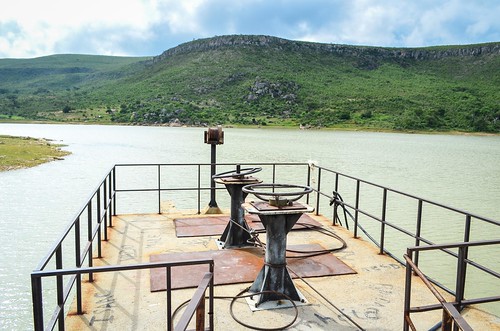

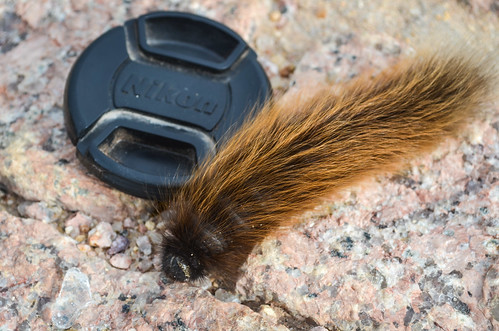
Towards the end, the asphalt makes room for paving stones. It feels like riding a roman road surrounded by weird rocks.
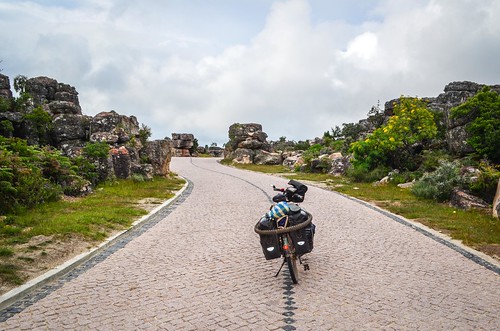

It’s a very special and unique feeling. The top of Tundavala, at 2200 m, is flat and covered with grasslands, sometimes with these weird rocks, until it hits the edge of the cliffs.
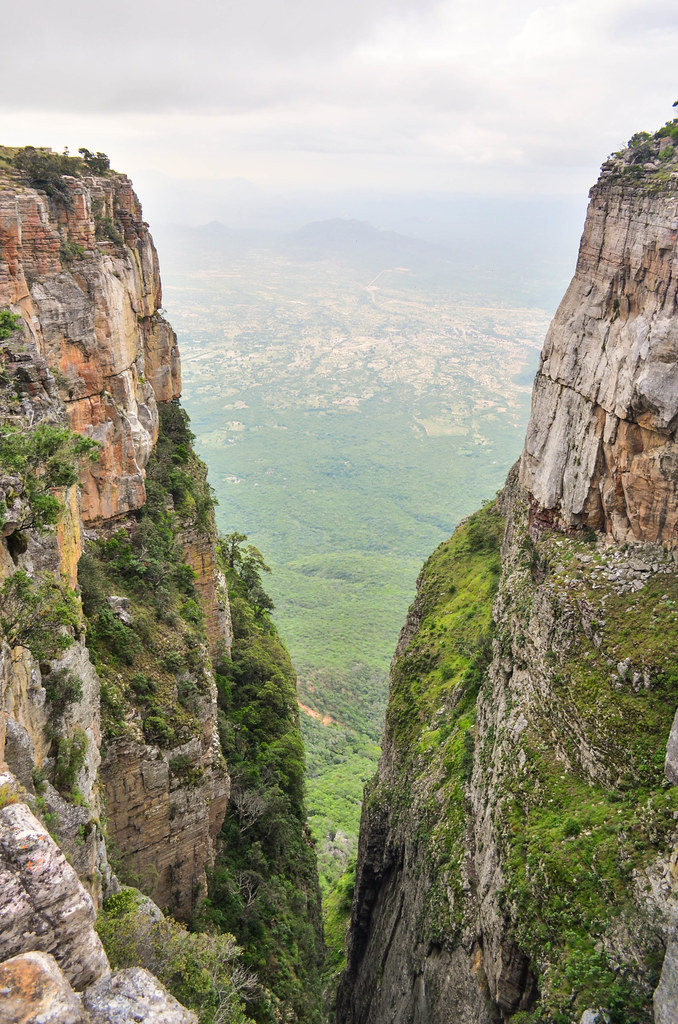
The escarpment is vertically plunging down to the plain of Bibala, the town we clearly see at the bottom. It is so close and so far at the same time: one kilometer of vertical drop and a few kilometers in the bush if I was a bird. But it will take me some 70 km until Bibala tomorrow by the road.
The Fenda da Tundavala is this surreal gorge cut.
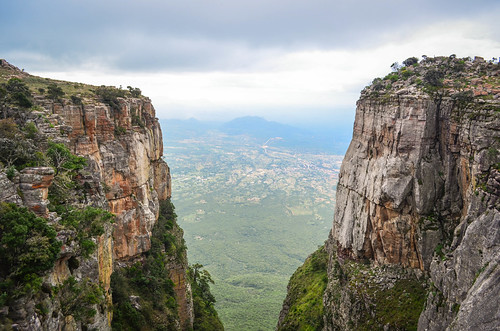
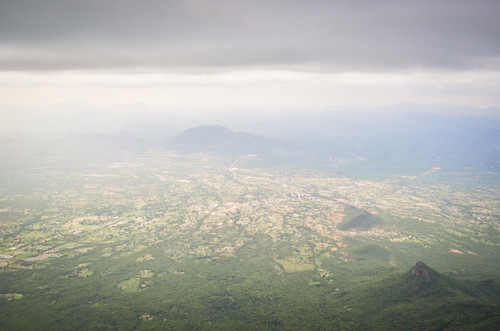
There are a few visitors and it’s cloudy. Infinite hills and peaks are nonetheless visible, crawling onto each other until as far as I can see.
There is one guard working there. Joaquin is watching the Unitel antenna. I ask him how safe it is to camp here. “No problem! Travelers with cars and motorbikes have camped here!” Joaquin is working day and night. His only task is to watch the red light at the top of the antenna and to call the Unitel office if it goes off. He also adds that the technicians with their supercomputers can detect it from Lubango by themselves, so I don’t understand what is the guard supposed to do … maybe to act as a presence against vandalism. The area is absolutely quiet, there is not a single sound, not a single animal.
Since I will be camping here, I wander around the cliffs until sunset. Inspired by my morning visit of the Cristo Rei, I investigate various locations for another statue of Jesus.
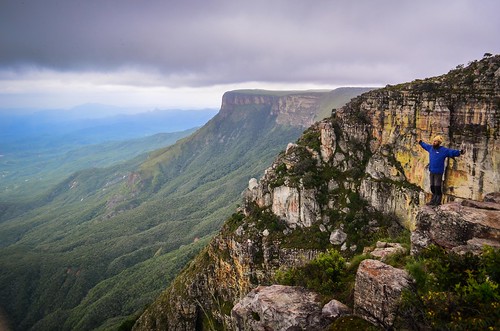

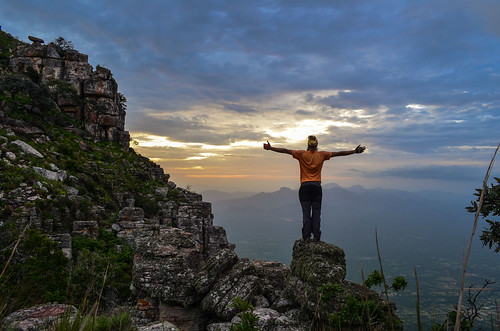

The sky is on fire. It’s very easy look at it, walk on a wobbly stone and fall down the cliff. Before I reach the plain at 1200 m, I would have theoretically 14 very long seconds of free fall to realize how stupid it was to stand that close to the edge for a Cristo Rei picture.
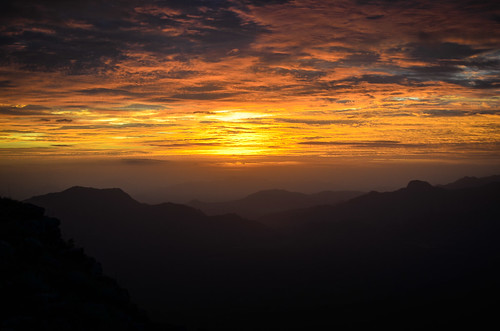
After sunset, Joaquin and I are alone in this end-of-the-world wide camping spot, where anywhere is fine to pitch a tent. Since he already made a fire, I invite myself and cook 500 g of spaghetti for our dinner. I learn, not for the first time, that travelers from Portugal have told him that “they’d better work here if they can, as the employment situation at home is catastrophic“. Joaquin asks me “we Angola were colonized by the Portuguese, and your country, France, who was it colonized by?“. I miss knowledge.
From my wonderful camp spot, the escarpment is visible in grey levels with the light of the stars. Joaquin says it won’t rain despite the uniformly clouded sky, because there is no wind. He lives here two weeks in a row with very little to do, so he must know the Tundavala weather well enough. I don’t worry either, as the rain for the past ten days in Lubango has been frequent but limited to drizzle. It is very quiet, with only the sounds of the birds, their echo, and a dog in the plain barking from time to time. What a place! Seventeen degrees in my tent, my coldest night in a long time.

In the morning, I ask Joaquin if people have fallen from the edge. “Of course, many! They come here to drink and then they fall“. Naturally.
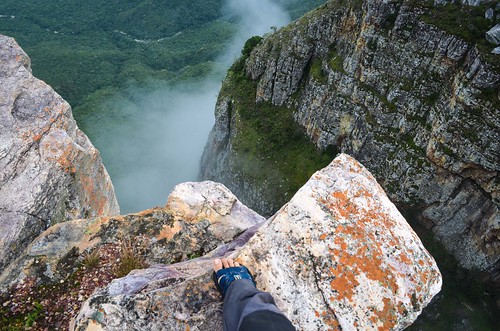
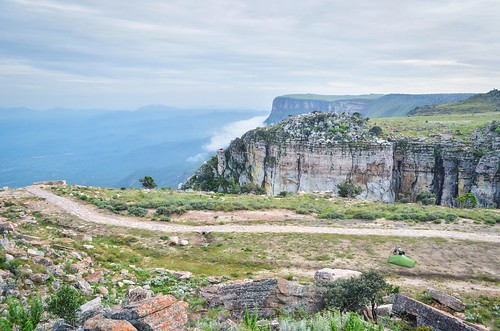
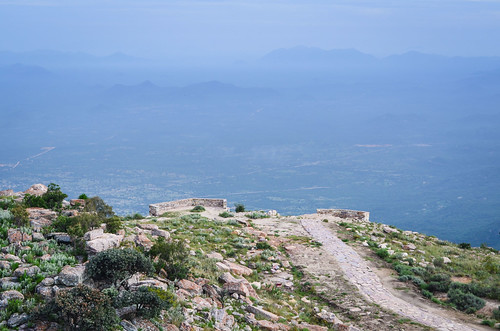



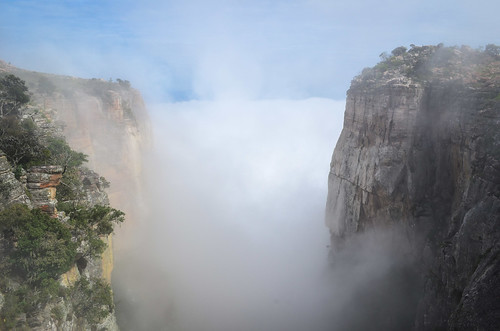
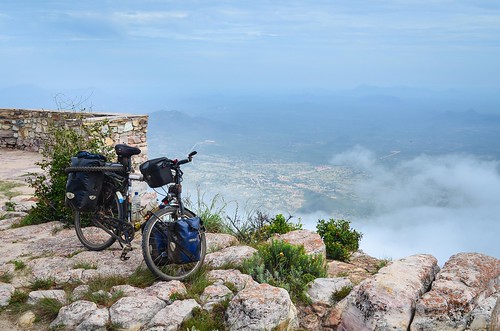
My goal for the day is Bibala, the town right under me.
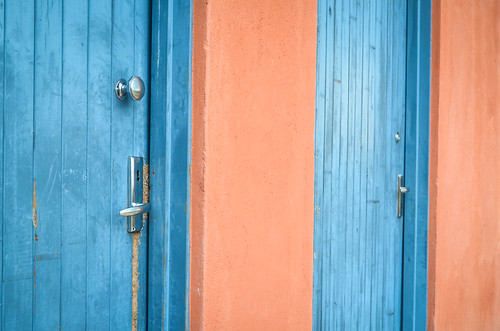

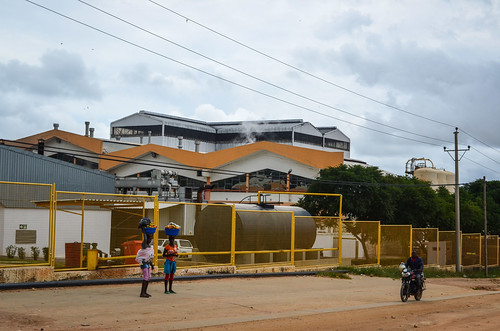
Just down from Tundavala, I must stop one hour in a shop of Lubango to wait for the rain to pass. It pours quite heavily and the streets are flooded. I heard that Namibia is being flooded too, and hope these are the last rains. The rainy season there is supposed to be over in March/April.
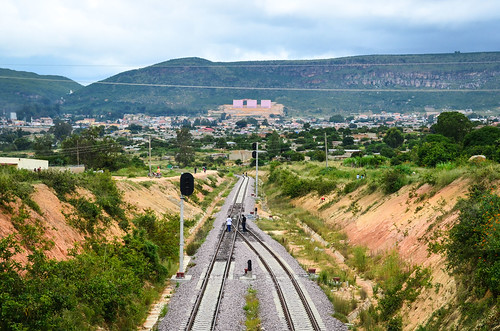
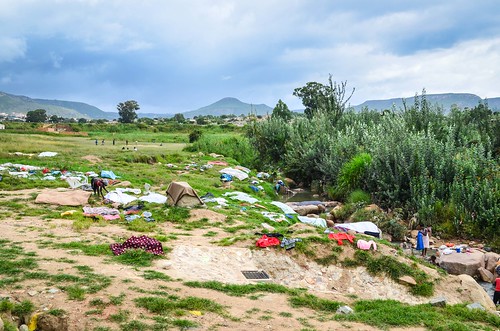
The road to Bibala is following the recently restored railway. The Chinese did it. The Portuguese had built the Moçâmedes railway in 1905 to link the port of Namibe, a large coastal Angolan city, to Lubango. It then extended until Menongue, in the center of Angola, halfway to Zambia. A side effect is that the Chinese are also building the supposedly very bad road, and for me it’s already perfectly graded all the way.
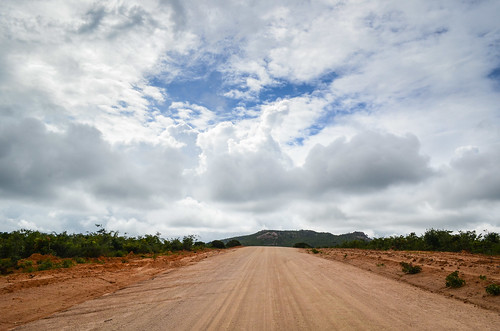
The sky is too cloudy to enjoy what should be stunning views.


The railway is this kind of journey I’d like to take. The (brand new Chinese) trains are already running for passengers once a week. It winds through the hills, making loops, to bridge the gap between the 1200 m high Bibala plateau with the plains of Lubango at 1900 m. This fine piece of engineering at the bottom of our planet must have been quite an achievement in 1905. On my road, the steep stony section makes me uncomfortably lose altitude, which I’ll have to ride up again in the next two days (via the Serra da Leba road, and that is calculated).
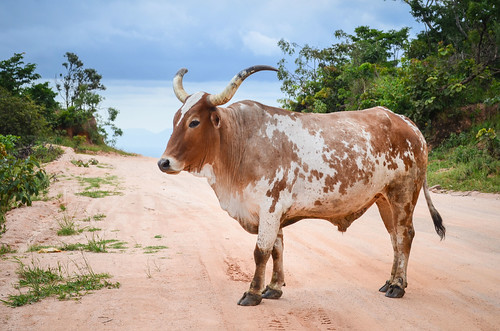
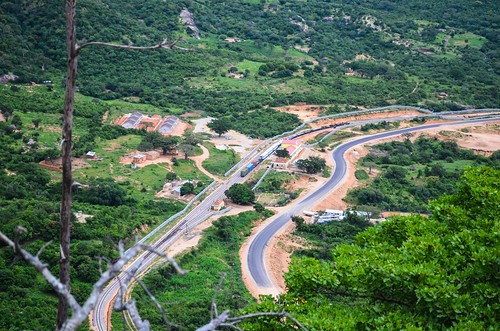
Although the road and the railway only deserve very small and remote villages (the main road from Lubango to Namibe is another one going through the Serra da Leba), the Chinese, managed by an Indian engineering consultancy company, planned 56 railway stations. I understand that this railway is important to carry goods from the port to Lubango, and potentially to unlock Zambia if it gets extended a thousand extra kilometers to the east, but I don’t see the point of building brand new fancy stations in the middle of nowhere. It looks very good though.
The asphalt is already laid from Humbia, a village made of nothing more but a few ruins, a police station, the new railway station, and a camp for the workers.

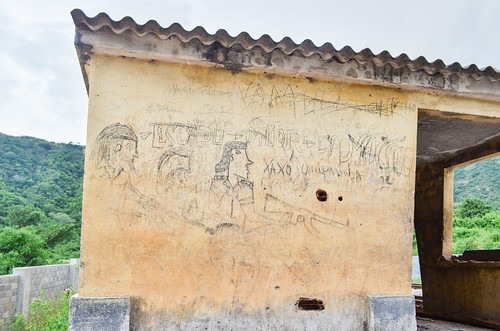
I receive a few raindrops and decide that I should find a shelter for the night. I have already passed Bibala and it doesn’t look like there are villages in the next kilometers. A school would be perfect right now. I am about to ask to sleep under the first run-down wooden structure I see by the road, but the inhabitants tell me about Cacanda, a village so big it has a school, just a few kilometers further.
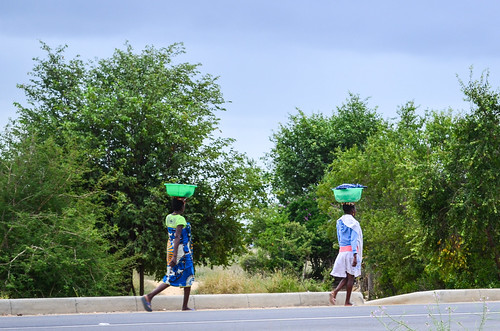
I make it there just in time before the night. Cacanda has many brand new government houses and a brand new school. It’s perfect. All the villagers smoke, women included. I have very rarely seen women smoking. They do drink a lot, like the men, but I felt tobacco was somehow reserved to the men. The chief, Augusto, has 18 children, “because it is the tradition here to have several wives“. And more importantly, he has an empty government house into which I can inflate my mattress and spend a good night.
It is warm inside the house, and I don’t plan to put up my mosquito net. But I quickly change my mind when I see a baby scorpion walking on the ceiling …
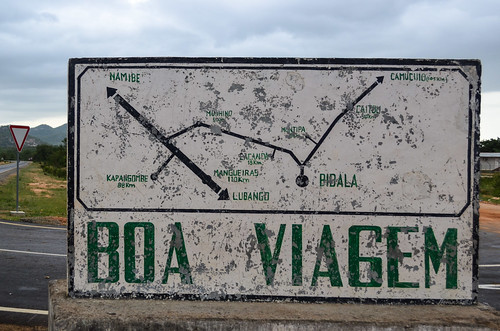






Leave a Reply